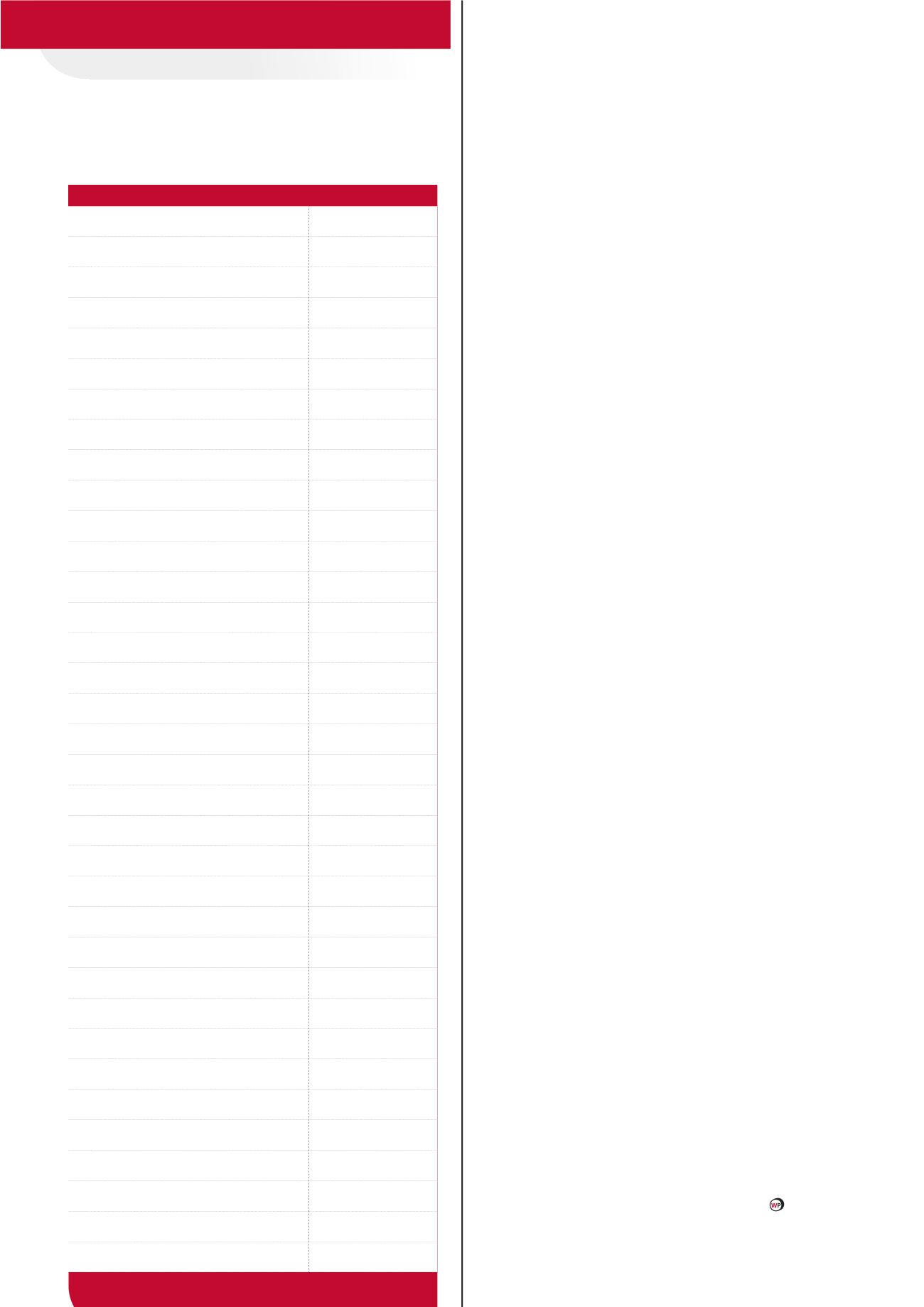
Remote monitoring can also help prevent potentially
dangerous and costly damage to equipment. For example, if a
compressor motor is using more power than usual, an intelligent
drive with embedded Ethernet connectivity can send a signal to
central control. Operators can then remotely stop the motor and
dispatch a maintenance crew to determine the root cause of the
issue.
Security
More connection points mean there are more opportunities
to improve pipeline operations, but they also create new entry
points for cyber threats, resulting in greater security needs.
The US National Institute of Standards and Technology’s
(NIST) ‘Framework for Improving Critical Infrastructure Cyber
Security’ provides guidance for developing a security programme.
Meeting and maintaining the standards of these guidelines
can be broken down into a five-point plan for the security of oil
and gas pipelines and associated critical infrastructure.
)
Requirements development: Create a document that defines
terminology, identifies stakeholders, defines programme
requirements and goals, and assigns roles and responsibilities
for the cyber security programme.
)
Analysis: Conduct an analysis that not only identifies any risks
and threats, but also describes their potential consequences,
severity, and likelihood.
)
Design: Research industry-standard mitigation strategies
and identify the trade-offs, such as the cost, efficiency,
complexity, and impact on operations.
)
Implementation: Create a plan that defines how the
mitigation strategy will be implemented, as well as how
testing, verification, and maintenance activities will be
performed.
)
Educate and improve: Commit to continuous improvement
through ongoing education, training, and auditing.
Taking the next step to a modern pipeline
architecture
The challenge of successfully operating decades-old
infrastructure while meeting today’s business and security
demands can be overwhelming. A partner is needed that can
help deploy modern and smart systems, yet also understands the
pipeline industry and business challenges at play.
Whether a new pipeline is being deployed, or existing
systems are being upgraded, expert help from experienced oil and
gas operatives is vital in order to be sure the right information,
process control, motor control, and safety solutions are being
received for all pipeline infrastructure, compressor and pump
stations, and terminal and storage facilities.
The benefits of a strategic approach to modernisation are
manifold, but operators should be looking to achieve significant
improvements to worker safety and overall cyber security.
Meanwhile, a reduced total cost of ownership, simplified HMI
configurations, improved operability, and reduced downtime and
associated maintenance costs should result in a fast return on
investment for the modernising pipeline operator.
Advertiser
Page
3P Services GmbH & Co.
81
ABC
84
BAUMA
53
Böhmer GmbH
78
CRC-Evans
11
DeFelsko
71
DENSO GmbH
35
Electrochemical Devices, Inc.
77
ENTEGRA
15
Gastech
95
Girard Industries
87
Hercules Piping Tools Engineering BV
47
Intero Integrity B.V.
9
LNG Industry
83
Maats Pipeline Equipment
OFC, 27
Mears Group
71
Midwestern
2
NACE International
73
Pigs Unlimited International, LLC
31
Pipeline Inspection Company Ltd
37
Propipe Limited
91
Quest Integrity
19
ROSEN Group
IFC
SCAIP S.p.A.
OBC
Seal for Life Industries
57
Stanley Inspection
4
T.D. Williamson
25
TOGC 2020
88
TRACTO-TECHNIK GmbH & Co. KG
83
Vacuworx
65
Vermeer
43
Vietz
IBC
Winn & Coales International Ltd
7
World Pipelines
67, 73, 83, 92
Worldwide Machinery
61
ADVERTISERS’
DIRECTORY








